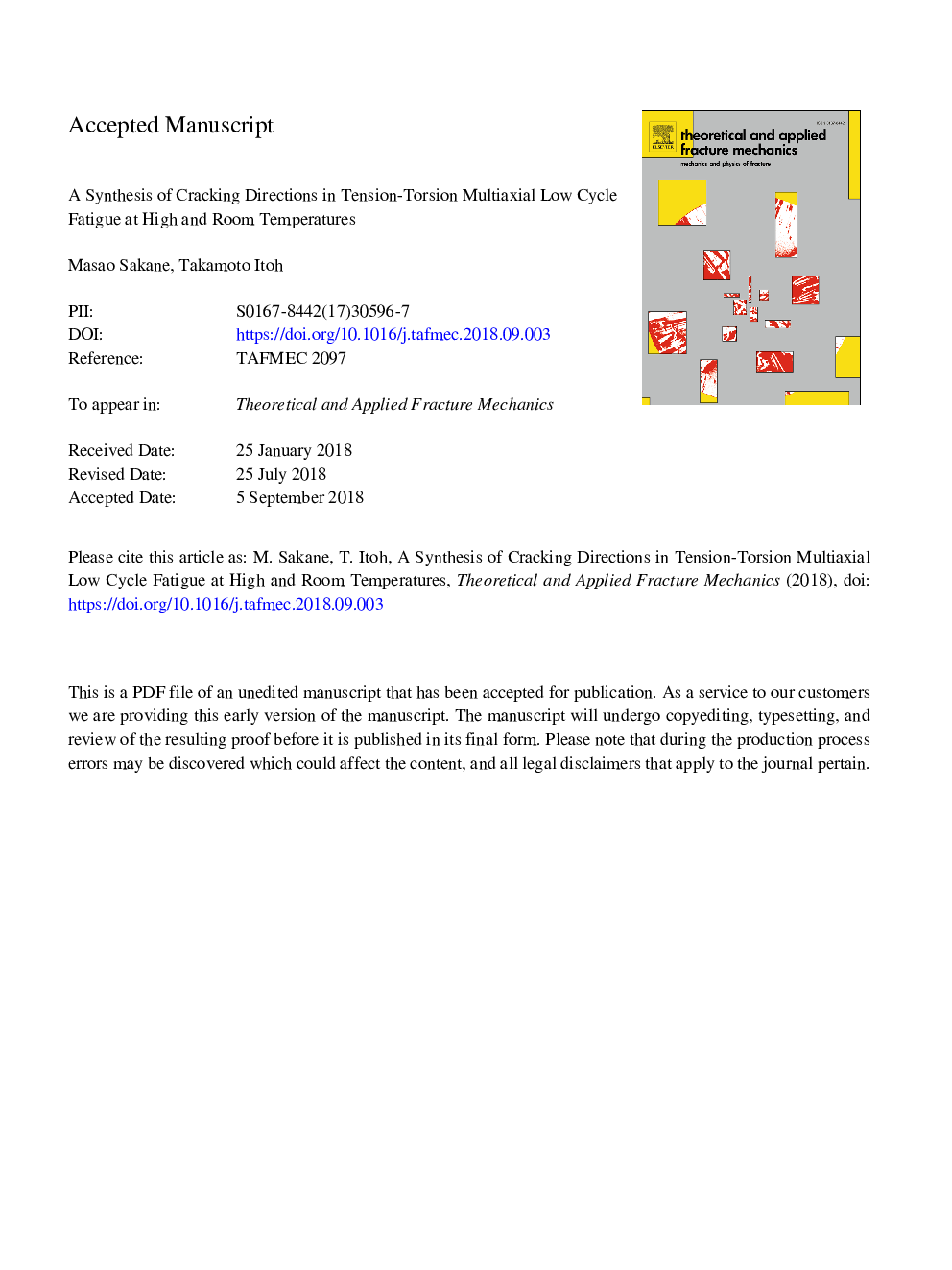| Article ID | Journal | Published Year | Pages | File Type |
|---|---|---|---|---|
| 10152467 | Theoretical and Applied Fracture Mechanics | 2018 | 35 Pages |
Abstract
Cracking direction in multiaxial low cycle fatigue is an important research subject because cracking direction is a physical basis for developing an appropriate multiaxial low cycle fatigue damage model. However, there are still many open questions about cracking direction in multiaxial low cycle fatigue. Maximum shear and maximum principal cracks are reported in tension-torsion low cycle fatigue, depending on stress/strain multiaxiality, stress/strain range, notch, and type of materials. The reason for two crack directions has not been well investigated. This paper overviews and discusses a couple of factors that influence the cracking direction, including strain multiaxiality, notch/precrack and strain range for low alloy steels and nickel base superalloys.
Keywords
Related Topics
Physical Sciences and Engineering
Engineering
Mechanical Engineering
Authors
Masao Sakane, Takamoto Itoh,
